Those products that are designated under the generic term “compounds” indicate that the substances that form part of their formulation are barias, mostly organic chemical compounds, more specifically what organic chemistry defines as “carbon compounds”. Therefore, mainly carbon and hydrogen atoms are involved in its composition, although other elements such as oxygen, nitrogen, etc. are also found.
In the case of the metal industry, under this name are included a series of products, whose basic application is to be used as sealing materials and which could be defined as “the mixture of organic materials in the form of suspension or solution, used to seal the seam of containers or to fill gaps and get leak-proof joints. “
Traditionally there have been three classes of sealant organic compounds:
– 1ª.- Liquid compounds for closing lids.
– 2ª.- Solid cements for the lateral seam of bodies, applied once cast.
– 3ª.- Liquid cements in the form of “pastes” (tails) to fill spaces, used in body tabs or to cover leaks.
The last two classes its use today is very reduced. The first, on the contrary, its use is compulsory in all metal containers if an adequate seam is to be obtained, so we will focus on it from now on.
SEALANT COMPOUNDS FOR ENDS SEAM
The compounds used for the closing of caps are materials based on rubber (or rubber) that are applied by different methods on the wing of the lid and act as an effective seal within the seam, ie in the lid-body union of the container.
Originally, the primitive containers had the lid attached to the body by means of a solder feed. This welding by itself, made the union watertight. But in 1880 a new way of attaching the lid to the body appeared by means of a pair of hooks that were interlaced with each other. With this appeared the seam that continues to be used today. To achieve that this union was hermetic it was necessary to incorporate a sealing element between both metal hooks, with this the seals made an appearance for seam.
The first sealing material was a paper in the form of a ring that fitted to the wing of the lid, being incorporated into the seam when it was made. Later it was replaced by a rubber ring similar to the one used in the jars of homemade containers.
In 1900, a compound was developed in liquid form that could be applied to jet on the wing of the lid in controlled quantity. The application operation was improved by performing the same under pressure and rotating the lid at high speed. Thus the administered drop was extended by the action of the centrifugal out around the contour of the wing with enough uniformity. With the passage of time and as the requirements and knowledge of sealing conditions increased, different types of organic compounds were appearing that were adapted to the conditions of the packaged product and the type of seam of the can.
REQUIREMENTS OF SEALANT COMPOUNDS
A sealing compound must have the following general properties for its use to be acceptable:
– Be conveniently applied and cured.
– Being resistant to the mechanical actions of the closing efforts
– Resist chemically the packaged product.
– Be free of contribution of smells and tastes.
– Be economic.
COMPOSITION OF SEALANT COMPOUNDS
A typical formula of a sealing compound includes the following basic ingredients:
Solids content:
Elastomers (Rubber or plastic) 20 – 25%
Resin 10 – 25%
Pigments 40 – 60%
Solvent Liquid 30% minimum
The % are referred to the weight.
The compounds with higher solids content tend to run with difficulty. The concept to describe the resistance of a substance to flow is defined by the term “viscosity”. The viscosity is measured by means of cups of finished and funnel-shaped capacity, controlling the time it takes for the liquid contained in them to pass through its orifice. A substance is so much more viscous the longer it takes to flow.
When a substance such as the compound withstands a certain force before flowing, it is designated as a “plastic” material. Most sealing compounds are not free to flow and are in the plastic-viscous category; therefore, they require special methods of handling and application.
ELASTOMERS
Elastomers can be defined as those materials that are capable of returning to their initial dimension – or position – when a deforming force ceases to act on them. For example, rubber is an elastomer that can stretch at least twice its initial length at room temperature and return to its original size.
The elastomers are the most important components of the compounds. When pressed inside the seam, they adapt thanks to their elasticity to the internal surfaces of the same, sealing the assembly. They are also quite inert materials, resisting the physical and chemical effects of the products contained in the containers.
There is a range of elastomers that allows you to choose the most suitable one depending on its use. Natural rubber is obtained from latex which in turn is extracted from the juice of certain tropical plants. It is prepared for use by heat and appropriate treatments. Natural rubber has a limited use in the formulation of compounds. In most cases rubbers or synthetic rubbers are used such as: neoprene, butadiene, polyethylene, etc.
The “Achilles heel” of the compounds is in their resistance to oil and fats. Not all compounds are resistant to oil. There are many of them that under the action of the oil soften, losing their properties and under the pressure to which they are subjected within the seam they are partially expelled. With this the sealing of the same is lost. This test is so decisive that the compounds are really classified into two large groups: “oil resistant” (oil proof) or not. Whether they are oil resistant or not depends to a large extent on the elastomer used. Most rubbers do not meet this condition, although with proper treatment (vulcanization) they can be partially resistant. It is certain synthetic rubbers that best meet this condition.
RESINS
Natural resins are sticky, clear-toned substances that are extracted from certain trees such as pine. In general, the resins can be natural as indicated or of synthetic origin, the latter obtained by formulation from raw materials and a chemical process. They are classified into different groups such as: phenolic, vinyl, epoxy, etc.
Resins fulfill several functions when used in the formulation of a compound, such as:
- They allow the adhesion of the same to the internal walls of the seam.
- They give a certain consistency – “body” – to it.
- Increase viscosity.
- They facilitate higher concentrations of solids.
In the manufacture of compounds, synthetic resins are preferably used, since it is possible through the use of suitable raw materials (monomers) to obtain the desired properties in each case.
PIGMENTS
The compounds contain important quantities of certain materials that improve their physical properties such as: hardness, rigidity, resistance. Properties that are very necessary to support the effects of abrasion, tear and cut that originate during the formation of the seam.
Pigments are specific inorganic chemical compounds such as calcium carbonate, talc, zinc oxide, titanium oxide or carbon black. They can also be natural products such as very thin soils (barites). They are the ones that transmit the characteristic color to the compound, which is usually gray although there are also red or light colors.
LIQUIDS (SOLVENTS)
In a compound, the liquid phase or solvents have several functions:
– It is the fluid that serves as a vehicle to the solid elements of the compound.
– Its proportion largely determines the degree of viscosity and density of the compound and therefore its resistance to flow.
– Facilitates the handling of the sealant compounds by behaving like a fluid.
– It makes possible its application in the gumming machines to be dosed in the form of drops.
There are two large groups of solvents:
a) Solvent based: They are organic products such as: acetone, hexane, toluene, etc. They have the property of evaporating once applied to the lid. Its use is increasingly recovered due to environmental problems. They are highly flammable
b) Water based: In this case, water is basically used as diluent element with small amounts of ammonia. They are more ecological, but they require the use of a more intense source of heat for their elimination.
OPTIONAL INGREDIENTS OF SEALANT COMPOUNDS
In addition to the above basic elements, you can add another series of optional substances such as:
a) ANTIOXIDANT
It is used to increase the life of the compound by avoiding or reducing the effects of deterioration of oxygen on the elastomer.
b) PLASTICIZING
It can be added in small proportions to allow a much more efficient mixture and contribute to a certain softness in the compound. They are lubricants like Vaseline, mineral oil etc.
There may be other optional ingredients.
ADDITIVES
These elements are added to the compound just before use. After its incorporation, the compound has a time limit to be used for its presence to be effective. After this time the compound has been structurally modified and is not suitable for use.
A) ACCELERATORS
They are substances that accelerate – improve – the characteristics of the oil resistance of an elastomer in a compound. It helps the chemical action of vulcanization and reduces the risk that the compound softens on contact with oily products. It can be added to either a water-based or a solvent-based compound.
B) ACTIVATOR
Added to water-based compounds helps boost the vulcanization reaction by improving oil resistance.
C) ANTI-MEMBRANE SOLUTION
It is a material based on lecithin that prevents the formation of filaments and membranes in the compound during the operation of gumming. It is added in small quantity and remains active for a maximum of 24 hours after its incorporation.
D) CANSURFAS
It is a wetting agent that is added to water-based compounds to improve coverage at the time of application on lids that have received a lubrication. With its use it is facilitated that the layer of compound on the metallic surface extends well – uniformly, without leaving “gaps”. It also stabilizes the viscosity and prevents the separation of solid and liquid particles.
CLASSIFICATION OF SEALANT COMPOUNDS
The compounds can be classified according to their different factors. How are they based on:
A) CONTENTS OF SOLIDS
According to the percentage of solids, the compounds are classified as: “low” or “high” content. There is not a value of% solids determined from which a compound is “high content”, but from 50% it can be considered that it is. When they began to be used at the beginning of the 20th century, solids were only 6%. Over time it was increasing. Today the use of “high content” has become widespread, reaching 70% or more. High content compounds heal faster and use less liquid phase. Therefore, they reduce the consumption of energy and raw materials.
B) USE
For its use, a compound can be used for covers for: a) food packaging or b) industrial packaging. The quality of its ingredients will depend on this use. A food compound will be made from a high grade elastomer that will resist high temperatures and strong pressures generated during its process. When the packaging does not support thermal processing, the composite will not be subjected to these harsh conditions and will only function as a sealing joint, therefore its components may be of lesser properties.
C) PRODUCT RESISTANCE
They are divided into two large groups according to whether or not they are resistant to oils and fats. They are called “oil proof.” Or “no oil proof.” As already indicated, this depends mainly on the elastomer and the use of suitable additives, accelerators and activators.
D) TYPE OF SEAM
- a) Joints for preserves. It is the most common use of compounds. They are applied on the wing of a lid that will then be integrated in a normal (sertido) seam.
- b) Seals for plugs These other applications include, for example, pail containers for paints where the lid can be reused and rests on the mouth of the body. These compounds are fluffy and have different characteristics. The same in particular are called “puff” type, in them the% solids can be very high – up to 80% or more – but there are other types.
E) APPLICATION
The way to apply on the lid also gives rise to various types of compounds.
- a) Injection: When the application is on a round lid, it is done by dropping a drop by means of a nozzle with a diameter between 0.6 to 0.9 mm that is fed from a pressure circuit. The injection pressure can vary between 0.5 to 1.5 Kg / cm2. The simultaneous rotation of the lid allows the correct distribution of the drop of compound.
- b) Printing: When the lid is not round, the previous system can not be applied. There are two alternatives in this case: a) The classic tampon, in which a tool with the approximate shape of the wing, gets wet in a tank of compound and then by an alternative movement, deposits the compound dragged on the wing of the lid . It therefore resembles the operation of a tampon or stamp, hence its name. B) The modern shower, which is a mixed system of the above. The tampon in this case acts as a shower on the wing of the lid. For this purpose, it has a series of holes blocked by needles that, when pressed on the wing, move opening the holes. The shower is fed from a pressurized nurse tank. The application quality of the latter is better. The compounds used in case B) have lower% solids.
In general, the compounds intended for non-round caps have lower solids contents in relation to those of round caps.
The weight of the compound to be applied is precisely controlled once it is dry. To calculate the same, it must be taken into account that the quantity must suppose a fixed volume of filling, which in turn is a function of the size of the seam and therefore of the size of the wing of the lid to be gummed. Known this constant fixed volume, some simple formulas in which the density of the same and the% of solids intervene, together with the development of the wing of the lid, determines the amount to apply in wet and dry.
F) CURED
To treat this aspect it is necessary to take into account if the compound is “solvent base” or “water base” because the treatment is different in both cases.
In general, all the sealant compounds require a certain time after their application to be considered cured. The first thing to do once the application is made is that the solvent is removed or evaporated. The rate of evaporation depends on the type of solvent,% solids and temperature. In the case of “solvent base” it is very easy because it volatilizes. In the case of “water base” it is necessary to pass through a furnace although there are certain nuances as we will see later.
The curing of a compound is more than a physical drying of it. It carries with it a series of chemical reactions within the molecules of the elastomer and the resin, affecting its good performance in a decisive way to the resistance of the rubber to the oil. Usually heat helps the chemical process accelerate reducing its duration.
In the “solvent based” compounds, the use of heat is not mandatory, but a slight contribution of it is always positive, even more so if the covers are to be used in a short period of time. In the case of this type of compound, the subsequent heating of the lid can be replaced by a moderate preheating of the compound before applying it. The usual practice is that in the gumming of lids with this type of compound, no later curing oven is usually used. Vapor aspiration with good evacuation is always required to minimize the risk of explosion.
In the case of “water-based” gums, an oven has always been used and continues to be used, as the water does not evaporate easily and it would require a long storage time for its vaporization, which time would be negative due to the action of water on the lid. These furnaces work at a temperature of approximately 80-120 ° C or more and are capable of eliminating around 95% moisture. The drying time is a function of the temperature and the type of compound used.
But with the use of increasingly high solids content compounds, the amount of water to be eliminated is lower, becoming able to replace the oven by preheating the lid followed by another heating after the application, being the necessary equipment to These operations are simpler than a furnace. Its use in any case is always less effective than a conventional oven and requires a longer storage time before the use of the lids to facilitate complete drying, using packaging that allows perspiration.
For any type of compound a minimum storage period is always necessary at least 48 hours after its application and before its use in a seam. This ensures that the complex curing and drying process is complete. The residual moisture at the time of use should not exceed 1.5%.
STORAGE OF SEALANT COMPOUNDS
Compound drums should be stored in a dry place and under cover. The temperature can not undergo major changes, being more critical in the case of water-based compound, where in no case will reach the freezing temperature.
They must also be stored in such a way as to allow the “first-come-first-out” criterion to be applied.
PREPARATION OF SEALANT COMPOUNDS
All compounds should be stirred just before use. There are specific equipment for this, designed with the idea of not absorbing air in this operation, as this would harm its application, leading to bubbles. The time and conditions of agitation depend on the type of compound and are facilitated by the manufacturer thereof. Some compounds that require the addition of other materials, as we have already seen, this is the opportune moment for their contribution.


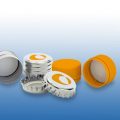

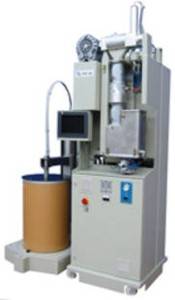
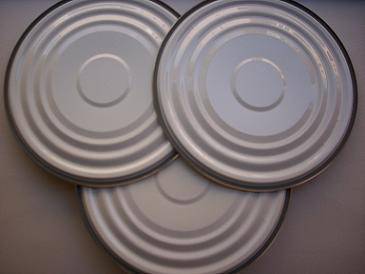
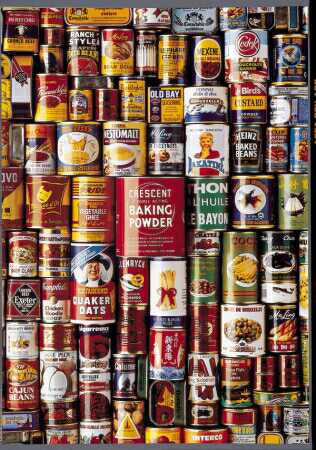
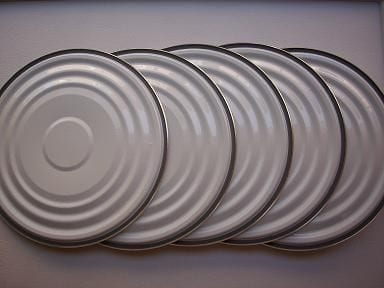
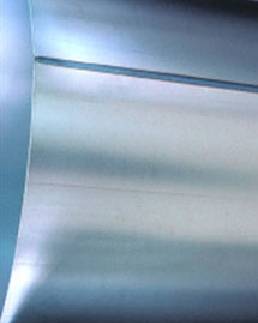

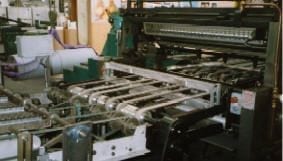




0 Comments